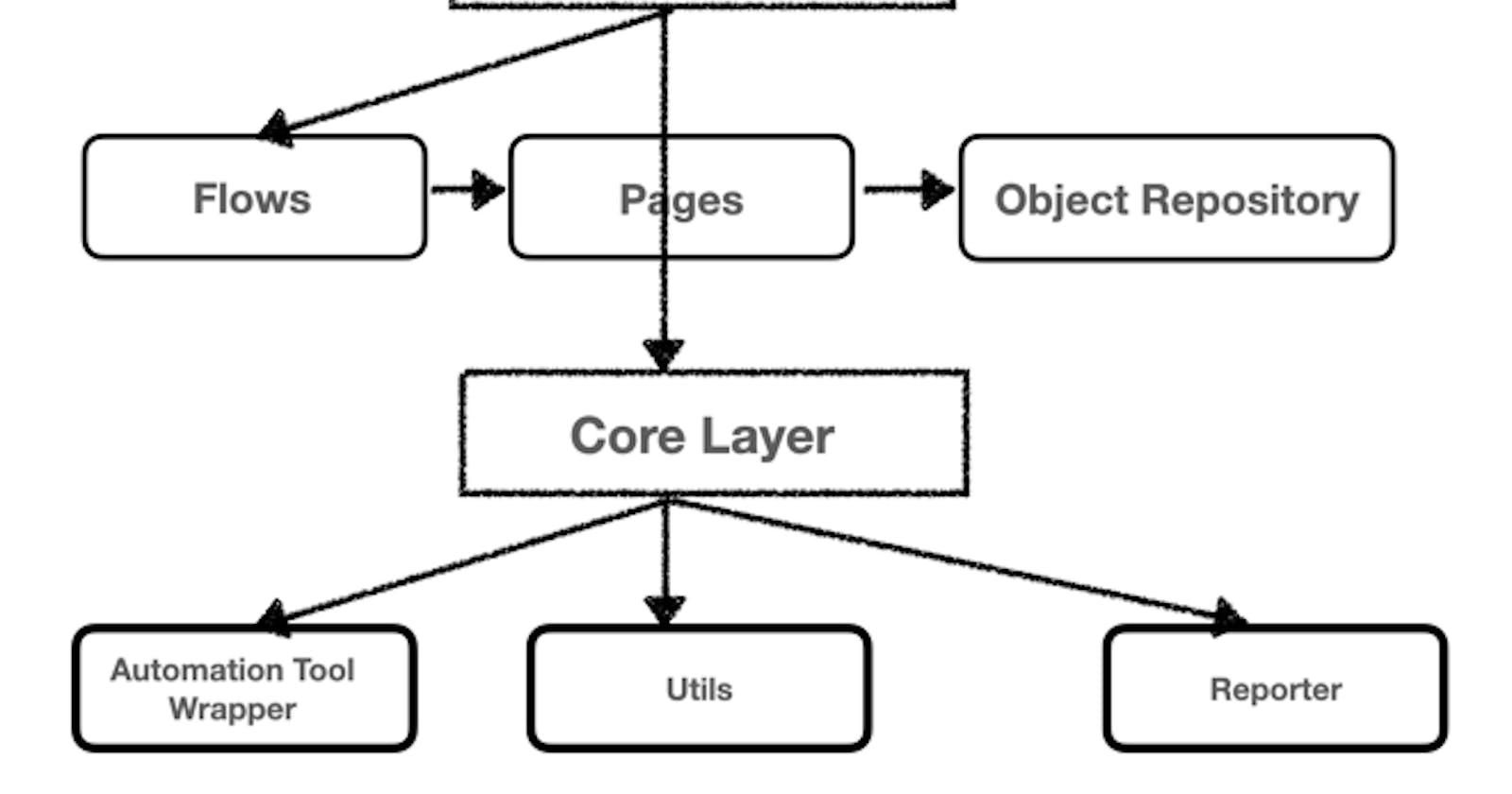The framework architecture I will be designing follows a modular approach, consisting of three key layers: core, application, and test. Each layer plays a specific role in achieving efficient and maintainable test automation.
Core Layer:
The core layer forms the foundation of our framework. It encompasses essential utilities, tools, and functionalities for effective test automation.
Within this layer, we have organized components such as utils, reports, and tools.
The utils package contains reusable utility classes for common operations, data management, configuration handling, and logging.
The report package includes modules for generating comprehensive test reports, capturing test execution details, and tracking test results.
The tools package houses the logic and wrappers to interact with automation tools like Selenium WebDriver, enabling seamless integration and interaction with the chosen automation technology.
Application Layer:
The application layer is the intermediary between the test and core layers. It consists of two main components: pages and flow.
The pages package encapsulates page objects or modules that represent specific pages or components of the application under test. These page objects provide an abstraction layer, allowing easy and consistent interaction with the UI elements.
The flow package represents the logical flow or workflows within the application. It contains reusable components that define high-level actions or business processes, orchestrating the interaction between multiple page objects and core functionalities.
Test Layer:
The test layer is where the actual test scenarios and test cases reside. This layer utilizes the functionalities provided by the application and core layers to execute tests.
The test layer is responsible for defining the test steps, performing assertions, and verifying the expected behaviour of the application. By separating the test logic from the application-specific code and core functionalities, this layer ensures the maintainability, reusability, and readability of the test scripts.
The modular architecture of the framework promotes code reusability, scalability, and easy maintenance. It allows testers to focus on creating meaningful test scenarios while leveraging reusable components and utilities. The clear separation of concerns among the layers ensures effective collaboration within the testing team, enhances the structure and organization of the automation project, and enables seamless integration with automation tools.

Reference
